来了来了!
HIR 2024-春季赛-主题解析
下篇来啦!
本次带来主题解析的依旧是资深文科导师E老师,让我们一起来看看吧!

本篇着重解读
Theme B:Global Challenges and Collective Actions
Theme B -主题解析
News cycles are dominated by military conflicts, such as those in Ukraine and Israel/Palestine. However, “global challenges" expand far beyond war to include other, more humanitarian crises: discrimination, famine, natural disasters, and disease, climate-related displacement, etc. Examples of collective actions to address this broad array of issues include not only multi-state coalitions (such as UNICEF) but also grassroots activism and national social movements.
新闻报道往往以军事冲突为主导,比如乌克兰和以色列/巴勒斯坦问题。然而,“全球挑战”绝不限于战争,还包括了很多其他人道主义的危机,比如歧视、饥荒、自然灾害导致的人群流离失所以及疾病爆发等等。
解决这些宏观问题需要集体行动来应对,既需要多国联盟(例如联合国儿童基金会)支持,也需要民间活动/组织和其他社会运动参与其中。
Theme B和以往的题就有些相似之处了,比如去年的“Technological Advancement and the World 科技进步与世界”,都是 A and B 的形式,讨论二者的关联。
很显然,我们可以从题目中看到两个关键词,Global Challenges 和 Collective Actions
关于Global Challenges
所谓Global Challenges,顾名思义,即全球范围内正在面临的挑战,含义是比较直白,不用多做解释,那我们需要思考的就是选择什么样的切入点。
关于Global Challenges,可能很容易就会想到能源危机、环境问题、气候变化问题等等,这些话题其实一直也是讨论得比较多的。
当然,我们也可以不局限于此,可以尝试从微观的层面去思考更多问题,比如将视角放到不同的地区、地域,这些范围内的人们受到了什么样的影响,或者正经历着什么样的Global Challenges。
此外,我们也可以试着再拓宽一下视野,题目中提到的一些歧视、饥荒等等问题,还是基于人类社会的。我们也可以不把目光放在人类上,目光投向比如在生态、生物等等方面,去探讨物种多样性的相关话题等等。
上述的这些,都可以说是Global Challenges,我们的Theme B开题,一定要格局打开,然后再明确一个目标~
关于Collective Actions
这个Collective Actions集体行动中的Collective其实给了我们比较宽泛的余地。可以是国际性的,也可以是区域性的,我们可以根据我们想要说的Global Challenges,来酌情选择。
E老师也为大家举了非常多的例子,
区域性的:G20,BRICS金砖国家,EU欧盟等等
世界性的:联合国,IMF,World Bank
应对气候问题的:COP28
这些都可以称作是Collective Actions,我们可以首先确定想要写的话题内容,根据它的特点,再去聚焦是区域性地,还是国际性的,或者是某个领域方面的。
除了这些有明确的名称或者组织性质的组织、联盟之外,题目中所提到的Grassroots Activisms等等,也是我们可以讨论的目标,比如Black Lives Matter等。
这些源于民间,通过网络等渠道传播后,逐渐形成了一种广泛的趋势,也可以是一种Collective Actions。
所以看待Collective Action,我们可以从多方面、角度去看待,可能是社会性的,全国性的、区域性的,或者全球性的等等。我们一定不要被词义框住,关键是看如何去定义,去分析~
关于And
在明确两个关键词之后,题目中的剩下的“And”,就用的非常妙,也很值得分析。
And 这个词,可以说就是我们需要讨论的“二者关联性”,也就是我们需要凸显自己的分析和观点的部分。
可能是因果关系,可能是相关关系等等,我们一定要阐述清楚,并加以论证~
总结
所以 Theme B 这道题,在我们展开分析的时候,其实需要注重其实需要注重的就是几个关键点
● 首先,是明确两个目标,Global Challenges,Collective Actions
● 其次,在确立自己的论述主题后,我们怎么去定义这个Global Challenges
● 再次,我们需要找到它和Collective Actions之间的关系,并进行清晰合理的阐述。
以上任何一点,都是不能忽略的~
备赛要点
关于HIR的备赛要点,E老师也根据丰富的带赛经验罗列了一些,希望大家可以有则改之,无则加勉~
ARGUMENT
在分析中,论点必须要是有质量的。
我们的文章不能够仅仅是总结、堆砌文献资料,必须是从中有所想所得,保证有自己的分析。
STEPS
一个完整的写作流程,可以帮助我们更顺畅地产出文章。
希望大家按照标准的写作流程来进行备赛,不要图方便而忽略某些步骤:
做好research 、写好outline 、再写paper
每一步走踏实了,才能够“顺理成章”,同时在此基础上,再加以深入分析,千万不要对任何的论据只是罗列出来,浅浅带过。
《哈佛国际评论》学术写作挑战
感兴趣的同学快来报名参与吧~
【翰林提供报名指导服务】扫码咨询!
推荐阅读
我们从HIR官网选取了一些不同领域的范文,给大家进行参考,可以从中了解评审更看好的逻辑思路,从中学习好的方法论~
01Africa vs. Climate Change
Energy & Environment
Development
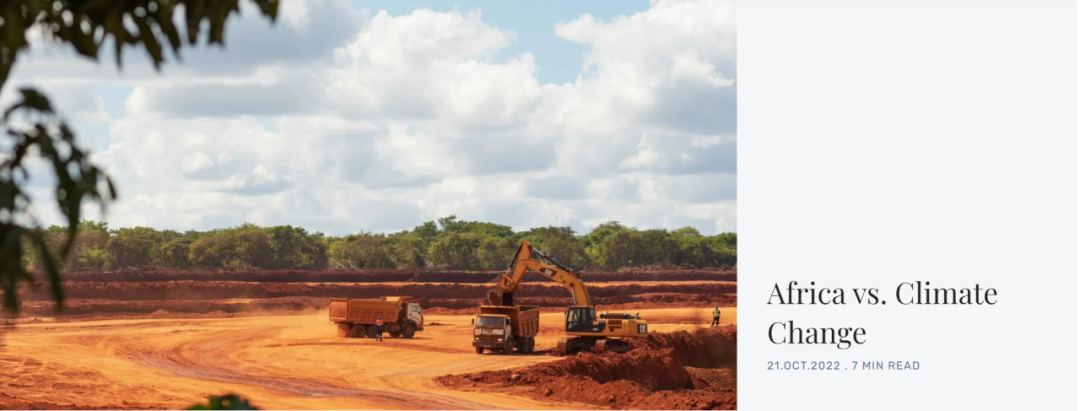
Climate change: one of the most pressing problems for every country. Or is it? Although it is common to hear of wealthier nations engaging in dialogue to combat the effects of global warming, climate change is not universally prioritized. While wealthier governments worry deeply about the impacts of global warming, poorer countries worry more about addressing more immediate needs, like poverty, starvation, and healthcare. According to a worldwide survey conducted by the UN, climate change is a priority for about half of the respondents in high Human Development Index (HDI) countries, a quarter of the respondents in medium HDI countries, and less than 10 percent of respondents in low HDI nations. Thus, climate change tends to rank higher on wealthier countries’ governmental agendas since they are better position to prioritize climate change over other concerns that are more widespread in developing nations.
In the case of Africa, although some of its countries are further along the path of industrialization and economic development than others, many nations in the region have low HDIs and are less equipped to manage sea-level rise, heat waves, droughts, and other natural disasters that are linked to climate change; thus, the effects of climate change will impact these developing nations more than developed countries that have more infrastructure and capital. At the same time, developed nations contribute far more to increasing the rate of global warming. According to the Center for Global Development, industrialized countries worldwide were responsible for 79 percent of accumulated carbon emissions between 1850 and 2011. Additionally, the wealthiest 10 percent of individuals contributed approximately half of the global emissions recorded in 2015, with the top one percent being responsible for approximately 15 percent of emissions—twice the amount contributed by the world’s poorest 50 percent. This means the poorest nations and individuals inevitably bear the heavy brunt of climate change consequences regardless of their minimal contribution to global warming.
The Case of Mozambique
Mozambique—one of the poorest countries in the world, where over 70 percent of its total population lives in poverty—is one of the most vulnerable nations to the effects of climate change, despite not contributing much to the causes of climate change. According to the 2021 Global Climate Risk Index, Mozambique is the fifth most affected nation by extreme weather over the past two decades, as the changing weather patterns caused by climate change have triggered waves of devastating cyclones and floods. Its key economic sectors—like agriculture, which employs approximately 75 percent of the Mozambican workforce—are severely affected by these extreme weather conditions, which, in turn, hinders Mozambique’s productivity. Needless to say, the adverse effects of climate change have contributed massively to Mozambique’s lack of economic development, as its average annual losses from cyclones are approximately US$440 million. In fact, Mozambique is estimated to have lost 12.6 percent of its GDP to the climate change crisis in 2019 alone.
Given that recovering from these natural catastrophes entails families rebuilding their homes or relocating to higher grounds, poor families in Mozambique are often sent into downward spirals of poverty. Although farming communities in Mozambique often move between living by rivers and on higher ground because of the constant change between droughts and floods, when Mozambique floods, families may not have enough time to relocate. In addition, Mozambique is particularly at a disadvantage when it comes to climate change-induced natural disasters because of its geography—its close proximity to the Indian Ocean, paired with the fact that it is downstream from many of Africa’s largest rivers, means that Mozambique disproportionately faces hydro-meteorological disasters. As Alexandre Tique, a meteorologist at Mozambique’s National Meteorological Institute, states, “it is difficult to circulate [...] information [regarding natural disasters] to everyone that needs it, because a very large percentage of Mozambique's population lives in rural areas.” Thus, the people of Mozambique are disproportionately exposed to the dangerous effects of climate change, and have far fewer resources to prepare and recover compared to people in more developed countries.
The Problem with Current Global Warming Solutions
To mitigate the impact of global warming, nations set targets for reducing carbon dioxide emissions. However, this seems to unfairly disadvantage developing nations like Mozambique that need to industrialize to promote economic growth. Historically, industrialization was the driver of economic growth for many wealthy nations in Europe and the Americas. Using cheap fossil fuels can lead to more manufacturing and higher rates of productivity in the workforce, which increases profits, urbanization, and standards of living while reducing unemployment and poverty. Underdeveloped areas of the world benefit immensely from fossil fuels, given that this resource allows them to escape poverty through accessible and inexpensive energy.
Mozambique’s Need for Development
While some economists may argue that less developed countries can essentially “skip” over industrialization by investing in human capital and governance, Mozambique’s economic welfare has lagged in terms of progress with respect to the developing world, partly because of its lack of accessible education and healthcare. Mozambican women have a 50.3 percent literacy rate, and the life expectancy for Mozambican men is roughly 56 years. Additionally, Mozambique is underdeveloped because of the historical exploitation of its people and resources at the hands of the Portuguese, who controlled Mozambique until it gained its independence in 1975. For more than 300 years of Portuguese colonization, Mozambique was depleted of its people and resources, as some of its most important industries during its colonial era were the slave and ivory trade—which had devastating ramifications for Mozambique’s economy and society. Additionally, the Portuguese were not interested in educating Mozambicans beyond what they considered necessary, which was left up to the Portuguese’s discretion; many schools even denied access to and purposely failed African indigenous students.
Although Mozambique finally won its independence in 1975, it has spent approximately half of its time since independence fighting multiple civil wars, further destabilizing its economy and depleting its population. Given how Mozambique’s tumultuous history has proved detrimental to its resources and human capital, Mozambique has had a difficult time industrializing. Furthermore, Mozambique experiences severe structural issues regarding its education system. A USAID study showed that only approximately 15 percent of Mozambican school days are actually utilized due to issues like a lack of teachers and other structural limitations; 66 percent of Mozambican school children finish elementary school without basic reading and writing skills. Additionally, with over 70 percent of Mozambicans living below the poverty line, many children are forced to either quit school to support their families or to start their own families. This poor education infrastructure makes it extremely difficult for Mozambique to invest in its human capital, creating a desperate need for industrialization. Expecting the nation to industrialize without inexpensive energy and electricity is unfair, especially considering that Mozambique’s natural gas consumption accounts for a negligible percentage of the world’s total consumption.
Harmful Alternatives to Carbon Emissions
People may argue that, in theory, restricting access to oil and natural gas-powered electricity plants for countries with low HDIs leads to fewer carbon emissions and helps address the climate crisis. However, stripping countries like Mozambique from access to fossil fuels means that people resort to more dangerous forms of energy. For instance, one of the most commonly used renewable forms of energy worldwide is biomass—the burning of wood and other organic matter—which accounts for 96 percent of the global renewable heat market. Unfortunately, biomass fuel (BMF) is even worse for the environment than the usage of gas and oil. The National Resources Defense Council (NRDC) states that burning biomass not only endangers the world’s forests, but also generates air pollution that can cause health problems like asthma attacks, cancer, and heart attacks, which, in turn, puts more pressure on the already-strained health services in poorer nations like Mozambique. Additionally, because biomass emissions are generated by individuals to cook meals or boil water rather than just at localized energy plants, there are greater health impacts on users, especially women and children, since they are primarily exposed to high levels of BMF smoke in rural areas. Thus, restricting fossil fuel usage in Mozambique may simply push more people to use BMFs, which has similar, if not worse, environmental and health impacts in comparison.
Extractivism in Mozambique
Mozambique is rich in fuel; it is Africa’s third-largest source of natural gas. To generate income, Mozambique relies on “extractivism”: earning money by extracting and exporting large quantities of energy worldwide. However, although this generates wealth for Mozambique, it also contributes to the growing threat of environmental catastrophes that have continued to impact other economic sectors in Mozambique. This creates a cycle in which Mozambique is forced to rely on extractivism because of the destruction caused by climate-change-induced cyclones, which are partially caused by extractivism itself. At the 2021 United Nations Climate Change Conference, Mozambique’s Prime Minister declared that Mozambique would derive 62 percent of its energy from renewable resources by 2030 in order to comply with the UN's Sustainable Development Goals (SDGs); he proposed Mozambique’s exploration of natural gas as a “transitional energy source.” The United Kingdom Export Finance (UKEF) responded by committing over $1 billion for gas extraction projects in Mozambique. Although some critics, like the environmental activist Anabela Lemos, argue that these extraction projects do nothing to mitigate climate change effects worldwide—causing irrevocable damage to the Mozambican environment—Mozambique’s Prime Minister’s proposal is reasonable. Moving away from utilizing fossil fuels must be among Mozambique’s priorities; however, doing so would structurally change its economy and social standards of living. Thus, Mozambique should be allowed to gradually transition towards relying on renewable resources on a longer time scale than developed countries given that fossil fuels are so central to Mozambique’s economy.
Moving Forward
Overall, it is perhaps in Mozambique’s best interest to transition away from extractivism and strive to re-envision its economic growth strategies. Moreover, the international community must focus on making clean forms of energy like solar panels more accessible to low HDI countries through subsidies and similar policies. Clean energy plants should be built to prevent health issues stemming from BMF smoke. The diversification of energy sources in Mozambique will allow it to diverge from the usage of fossil fuels while improving its economy. Mozambique and other low HDI countries should not have to bear the burden of resolving climate change, especially because they have historically contributed insignificant amounts to cause global warming. Although transitioning to renewable forms of energy is Mozambique’s ideal long-term solution to the climate change crisis, developing countries like Mozambique should be allowed to continue to use fossil fuels—at least for the time being. In other words, Mozambique’s best course of action may be to rely on natural gas and other fossil fuels in the meantime; nevertheless, it should still plan a gradual transition to renewable sources of energy, and developed nations must help facilitate this transition. Mozambique should not be pressured into setting the stage regarding international climate action; rather, it should be allowed to slowly adapt to a greener way of life.
链接:https://hir.harvard.edu/africa-vs-climate-change/
02Garbage Politics
Trade
Energy & Environment
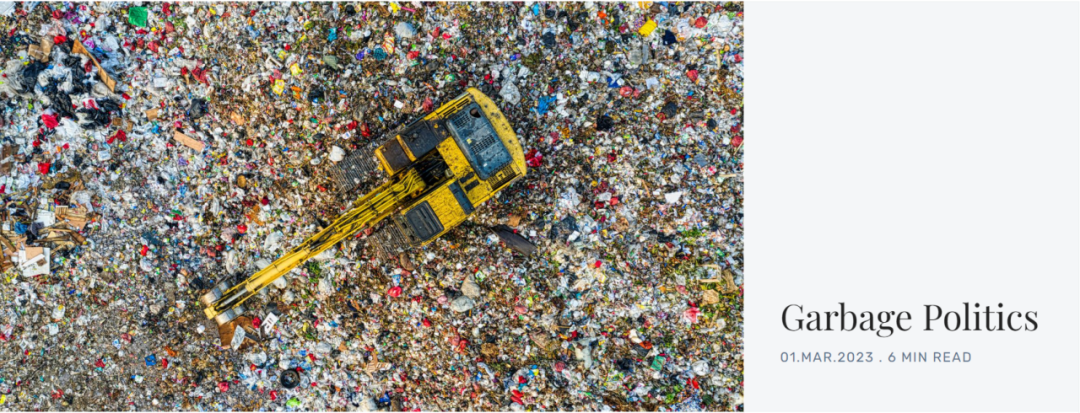
How Garbage Nearly Started a War
In April 2019, in an unprecedented move, Philippine President Rodrigo Duterte threatened to declare war on Canada. It was ostensibly out of the blue. But the ultimatum he leveled was the latest symptom of a festering problem that had long remained neglected: the politics of garbage.
Back in 2013, Chronic Plastics Inc. had shipped 103 containers of household trash, plastic bottles and bags, newspapers, and used adult diapers misrepresented as recycling from Vancouver to Manila. As early as 2016, a Philippine court ruled that Chronic Plastics must reclaim their waste. The corporation—and Canada—equivocated. Three years and one threat of war later, most of the trash was shipped back to Canada.
While this is one of the more dramatic occurrences, it is hardly the first time a wealthy country has exported exorbitant volumes of trash to developing countries under false pretenses.
A Brief History of the Garbage Industry
As countries develop, they tend to produce more recyclable garbage – the average person in the United States, for example, generates over two kilograms of waste daily. However, disposing of that volume of recycling in a clean manner is both technologically challenging and quite expensive. In the latter half of the 20th century, Asian countries, particularly China, agreed to receive plastic waste at a significantly lower rate than that of building sustainable recycling plants, even in the long term. This relationship functioned for about two decades.
The situation took a turn for the worse in 2018 when China abruptly stopped accepting the brunt of the West’s recyclable trash upon implementing the National Sword policy. This required that all imported trash be 99.5 percent recyclable. Previously, it had been absorbing over 7 million tons of recycling annually—70 percent of the United States’ and 95 percent of the EU’s trash. What could have served as a moment of reflection for the West regarding their lack of waste management facilities quickly morphed into a desperate scramble to find other countries to accept their garbage. With the West unwilling to sort their trash to the extent that it met China’s standard, Southeast Asia became the new dumping ground—namely, Vietnam, Thailand, Indonesia, and Malaysia, where rates of imported garbage rose by 171 percent.
Issues soon arose from this dynamic, primarily due to deliberate ignorance on the part of the developed nations regarding the fate of their waste once it leaves their ports.
Typically, countries accepting the garbage did not have processing facilities superior to those of the West, but rather more lenient laws, less centralized governments, and less oversight. In fact, globally, just 9 percent of recyclable waste is recycled. The vast majority is incinerated, dumped into a water source, or stored in a landfill, all of which are not only bad for the environment but antithetical to the concept of recycling. In spite of the emphasis placed on green waste management in purportedly environmentally-conscious countries, only a meager portion of recyclable goods is actually being repurposed as was intended. The premise of recycling is to send plastics to facilities where they will be reused, obviating the need for superfluous production. But there is a clear incongruence between intended recycling policies and their practice.
The Situation Today
Recently, more countries have enacted similar policies to China in response to the high quantities of waste contaminating the recyclable materials that they had agreed to process. Contamination not only makes the sorting process more tedious and expensive but actively pollutes these countries. Furthermore, such countries had become so inundated with Western garbage—recyclable and non-recyclable—that they had neither the capacity nor use for it. While China managed to reduce its levels of imported garbage by 99 percent, Southeast Asian countries have not been as successful.
The recycling industry is worth around US$250 billion, approximately the GDP of Portugal. For many people, the value is worth the risk. In response to restrictions on the cleanliness of imported garbage, many companies began to lie about their exports, stating that the refuse was far more recyclable than it was in actuality. Garbage exporters, working in tandem with importers, have largely managed to circumvent the government restrictions. Although the authorities of these countries have attempted to curb this detrimental practice, it’s arduous and unpleasant to sift through allegedly legal collections of waste and determine if they satisfy the country’s parameters.
Effects on People and Communities
In 2019, for example, the Indonesian government flagged 2,000 shipping containers said to be delivering recyclables but were contaminated, and a quarter were returned to their countries of origin. Most notably, 60 crates were sent back to Australia claiming to contain paper but instead were filled with household waste, packaging, used electronics, used baby diapers, and used footwear. In nearly all cases, importers and exporters have a tacit agreement on the composition of the waste, and the scheme is only foiled upon government intervention. Importing such waste is punishable in Indonesia by a prison sentence of up to 12 years along with a US$1 million fine.
The consequences of these actions are threefold: damaging the environment, posing serious health risks to people in the vicinity, and exacerbating the garbage problem as a whole.
The most lethal instance, though, occurred in Nigeria in 1988. An Italian business realized that it was US$4.3 million cheaper to ship 8,000 barrels of toxic waste to Nigeria than to process it in a plant governed by EU regulations. Their company proceeded to transport their 4,000 tonnes of waste to a local’s property after exchanging US$100 monthly for permission to do so. He, of course, was under the impression that the garage was not contaminated. After a chemical mishap, waste seeped into the local farmland, poisoning the rice crop, killing 19 people, including the property owner, and harming dozens more.
In terms of the environment, the more the garbage industry operates extrajudicially, the more destructive the effects on the environment will be. Even while the participants operated within the confines of the law, a large portion of recyclable materials was dumped in a landfill or incinerated. Furthermore, companies deceptively exported contaminated waste mixed into the garbage; deliberate or not, this is preventable and is a major factor in the decisions of these countries to stop accepting Western garbage. Now that the garbage trade practices operate increasingly illegally, there is even less oversight in terms of what is imported, how it is processed, and by whom. It’s important to note that the cost of recycling is far greater than dumping all the waste in rural Southeastern Asia or burning it or manufacturing new plastic to replace it, all of which are detrimental to the environment.
Landfills pepper rural land across Southeast Asia, where they engender devastating consequences. The incineration of vast amounts of plastic produces foul, toxic smoke. Furthermore, as plastics are irresponsibly deposited in landfills, they degrade, and microplastics start forming and circulating in the locality. Needless to say, both of these wreak havoc on the health of humans and animals in the vicinity. Essential water sources in rural villages have been documented to be veiled in a film of microplastic as a result of these practices.
Comments From Affected Individuals
According to a Malaysian mother named Evon, who lives near one of these dumps, this harmful dynamic has directly affected her family: “My son is always getting sick. I’m scared it will become more serious.”
Another Malaysian woman suspects that the river running through her village (and many others) serves as a mechanism for disseminating the waste given how it is downstream from landfills. Not only does their water quality drastically decline, but garbage and microplastics flow directly into their village via the river. She hopes that they don’t “become the next cancer village.” When asked what she thought about the situation as a whole, she insisted that Malaysia does not want to be “an international rubbish bin.”
Interestingly, there is some local support. Bangun, a poor village in Indonesia, sits nearby a landfill. Up to 40 dump trucks deposit garbage there daily. Two-thirds of its inhabitants rely on it as a source of income, scouring the trash for goods to sell. This pattern is not uncommon, especially in poorer villages where goods have a higher relative worth. Keman, who lives in Bangun, credits scavenging in the dump for funding his three children’s university tuition. Although it’s easy to view this behavior as yet another insidious manifestation of inequality, it goes to show that there’s far from a consensus even among those bearing the consequences firsthand. Additionally, the fact that thousands of people are financially dependent on there being constant flow of garbage further complicates the matter.
Future Possibilities
This dynamic does nothing to solve the environmental problem; all it accomplishes is cutting costs in richer countries by outsourcing their problems to poorer countries that have even less of an infrastructure to manage them and thus bear the consequences of Western convenience. Perhaps in the short term, richer countries benefit, but it is only a matter of time before popular support in southeast Asian countries impels the government to enact an import shutdown similar to that of China. After this shift, the West will have a considerably more difficult time finding a destination for their enormous quantities of waste; they will finally be forced to directly reckon with the crisis they caused. Delaying the construction of sustainable and efficient recycling plants serves only to postpone the inevitable, myopically prioritizing transient ease over what would be a beneficial solution for everyone.
Or, alternatively, we could use less plastic.
链接:https://hir.harvard.edu/garbage-politics/
03The European Green Deal: Addressing the Intersection of Climate and Racial Justice
Finance & Economics
Law & Diplomacy
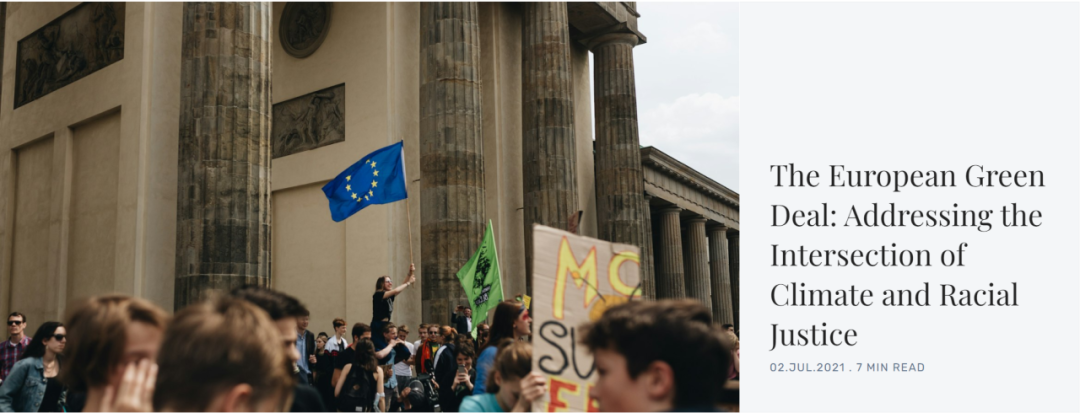
Emerging from the European Commission in December 2019, the European Green Deal represents one of the European Union’s boldest initiatives to combat the climate crisis. Backed by almost all EU member states and officially endorsed by the European Parliament as of June 2021, the twenty-four page deal outlines the EU’s collective objective to entirely eliminate greenhouse gas emissions by 2050. This particular objective requires all EU member states to reduce emissions by at least 55% from their levels in the year 1990, mandating that substantive progress be made within the next ten years to curb harmful greenhouse gas emissions. The deal is closely aligned with the economic priorities of the EU, a linkage underscored by the European Commission’s president, Ursula von der Leyen, who in 2019 noted in reference to the deal, “Our goal is to reconcile the economy with the planet.” As the largest economic bloc to implement a set of agreements directly addressing the climate crisis, the European Union has made significant progress in galvanizing support for environmental awareness and action at the governmental level.
Goals and Gaps
The European Commission states that the European Green Deal has three main objectives: 1) no net emissions of greenhouse gases by 2050, 2) economic growth decoupled from resource use, and 3) no person and place left behind. While admirable in its ambition to target the expansive issue of climate change, the lofty goals, particularly the third objective, have garnered considerable criticism. Despite the EU’s pledge to include and incorporate all populations as it pertains to climate, the vague language is a far cry from tangible implementation. Furthermore, environmental activist groups are becoming increasingly more vocal, arguing that, contrary to the deal’s objective, people and places are undoubtedly being left behind. In the spring of 2021, the European Green Deal was the target of intense criticism by the Equinox Initiative Toward Racial Justice, a collective of activists of color launched in March of 2021. The core mission of the group is to center the voices, experiences, and perspectives of communities of color within EU policy and legislative decision-making. The key criticism levied against the European Green Deal by the Equinox Initiative is regarding the deal’s failure to include race in its policies, as well as its role in perpetuating “green colonialism” in the Global South. “Green colonialism” commonly refers to the exploitation of the natural resources of marginalized populations by manufacturers and corporations of the Global North. This can manifest in varied and nuanced ways, but it ultimately disproportionately affects the standard of living of those living in exploited regions. By failing to include the perspectives of those most acutely impacted by the climate crisis, both within the EU and beyond, the deal in its current form falls short of comprehensively addressing the full scope of the crisis.
The Dangers of Wood Pellets
While the European Green Deal addresses the climate crisis with broad strokes, the plan fails to specifically reference particularly harmful practices that remain key tenets of European infrastructure and manufacturing. Europe’s wood pellet market, a core pillar of European biomass initiatives, is a primary driver of the oppression of particular communities. Largely regarded as a sustainable alternative to burning coal for energy, wood pellets have emerged as a key product to fulfill Europe’s energy demands and advance the EU’s goal of incorporating “transition fuels.” Wood pellets have garnered support as a form of renewable energy, as trees can be replanted, yet the larger picture is far more grim. The manufacture and production of wood pellets for the European market has exploded in the Southern United States, where forests are expansive and regulations are fairly loose. In only a few years the industry has grown to produce more than 10 million metric tons of wood pellets for export to Europe. The manufacturing hotspots, however, are disproportionately within close proximity of Black communities, leaving these populations to languish in areas of increased pollution and a crippling loss of biodiversity. The smog and toxic levels of fine particulate matter near these manufacturing facilities leave residents vulnerable to health risks such as heart and respiratory disease. The problematic practice of wood pellet manufacturing, while aiding in the EU achieving its climate goals, remains largely short-sighted, with policymakers turning a blind eye to the lived realities of those suffering the detrimental consequences.
Turning Inward
While public discourse is increasingly shifting toward acknowledging the failures of the European Green Deal as it relates to racial injustice beyond the borders of the EU, limited attention has been given to acknowledging the intersection of racial and environmental justice within the EU itself. The deal’s action plan does not explicitly incorporate tangible action steps to address ways to aid the communities of color in European cities and suburbs disproportionately affected by air pollution. The vague and broad language of the deal that calls for “no person or place left behind” skirts around directly acknowledging the experiences of minority communities living in industrial and highly polluted areas.
While now outside of the EU in a post-Brexit world, the racial and environmental intersection has long been especially salient in England. A UK study conducted in 2016 revealed that Black communities in London are more likely to breathe toxic levels of air pollution than their white or Asian counterparts. More specifically, the study showed that African and Caribbean people living in London account for 15.3% of those exposed to nitrogen dioxide levels that exceed legal EU limits, yet these populations only account for 13.3% of London’s total population. The Black population of London is largely concentrated in South London, specifically the areas of Southwark and Lambeth. These boroughs, where homes cluster around busy roads, also report the highest levels of nitrogen dioxide and air pollutant levels. Such disproportionate impacts of air pollution on communities of color highlights the need to address these issues through both a racially-conscious and environmentally just lens.
Within the EU, communities of color face similar plights. In the summer of 2020, anti-racism campaigns in France collided with those advocating for environmental justice. A coalition was subsequently formed within French suburbs urging policy changes regarding race, climate, and their intrinsically linked roots, causes, and ramifications for communities of color. Beaumont-sur-Oise, a Parisian suburb, was the site of a large march in July 2020, with participants demonstrating against not only racial injustice and police brutality, but broader issues related to climate. The march united around the overarching message of, according to the environmental advocacy group Alternatiba’s spokeswoman, Elodie Nace, “We want to breathe.” Nace noted in an interview with France 24 that Alternatiba’s main objective is to change the societal perception of environmentalism and center Black voices in conversations relating to climate change. Broadening environmental discourse to include communities of color is especially imperative as France’s least affluent suburbs, home to immigrant and minority communities, suffer disproportionately from the effects of air and water pollution.
The Parisian suburb of Pantin, for example, was named the most polluted suburb in France by the World Health Organization in 2016. More recently, a 2020 study at the Paris School of Economics on inequality in exposure to air pollution in France revealed evidence of cross-sectional and longitudinal inequality in exposure to fine particulate matter. It also found that in urban areas, census block deciles of the lowest income levels faced a disproportionate burden of exposure. Additionally, results indicated that the share of immigrants in particular census blocks is positively associated with fine particulate exposure, suggesting a prominent ethnic gap.
A Burning Problem
A large portion of urban and suburban pollution within the EU stems from harmful practices, such as the widespread use of garbage incinerators. For years, the EU has burned millions of tons of garbage, promoting the technique as a means to turn waste into usable energy. Proponents of the tactic cite the benefits of transforming “waste to energy,” yet environmental advocacy groups, including ZeroWaste Europe, are urging an immediate cessation of the practice. According to a member of the Brussels-based NGO, Janek Vähk, burning garbage is a leading source of polluting energy, one that “undermines the EU’s 2050 net-zero emissions target.”
A 2010 study published in the European Journal of Public Health on inequalities and environmental justice as it relates to waste management zeroed in on the dire impacts of waste management. Researchers reviewed literature published after 1983 and found consistent indications that waste facilities are disproportionately located in areas in which deprived communities reside. The study called for an identification of revised waste management policies to minimize the health risks associated with living in close proximity to waste management centers, namely garbage incinerators. Despite such studies and an increasingly vocal coalition of opposition, incinerators remain a large part of European waste management strategies. With many nations failing to implement the best pollution-control systems, the toxic pollutants and emissions from garbage incinerators remain inadequately regulated, continuing to wreak havoc disproportionately on communities of color in close proximity. Trends in incinerator use do not appear to be slowing down, with even a few European countries, including Greece, Bulgaria, and Romania setting plans in motion to build new incinerator plants. Without a change in policy, communities living near waste management centers remain vulnerable to the hazardous impacts of such harmful practices.
The Path Forward
The European Green Deal represents a significant step forward in European efforts to combat the climate crisis, yet gaps remain, especially at the intersection of racial and environmental justice. The objective of eliminating greenhouse gas emissions is undeniably admirable and represents the EU’s commitment to a cleaner, more sustainable future. Even as these strides are made at a legislative level, however, there must be sincere efforts implemented to address pervasive inequities stemming from the climate crisis. Key issues demanding policy revision include the air pollution and wood pellet production disproportionately impacting communities of color. By centering the voices of those most acutely impacted in conversations about environmental policy, the most crucial aspects of climate change could assume a role at the forefront of legislative discourse. Seeking alternatives to entrenched practices that perpetuate inequities for deprived areas and populations and subsequently incorporating such alternatives into legislation is imperative for implementing a comprehensive climate plan -- one that truly leaves no person and no place behind.
链接:https://hir.harvard.edu/the-european-green-deal-addressing-the-intersection-of-climate-and-racial-justice/
参考建议
同时,我们也从The Global Horizon发表平台,为大家搜罗了一些素材文章作为参考~帮助大家拓宽视野,增添对于国际社会的了解~
01One of the world’s biggest cities may be just months away from running out of water
Politics
International Relation
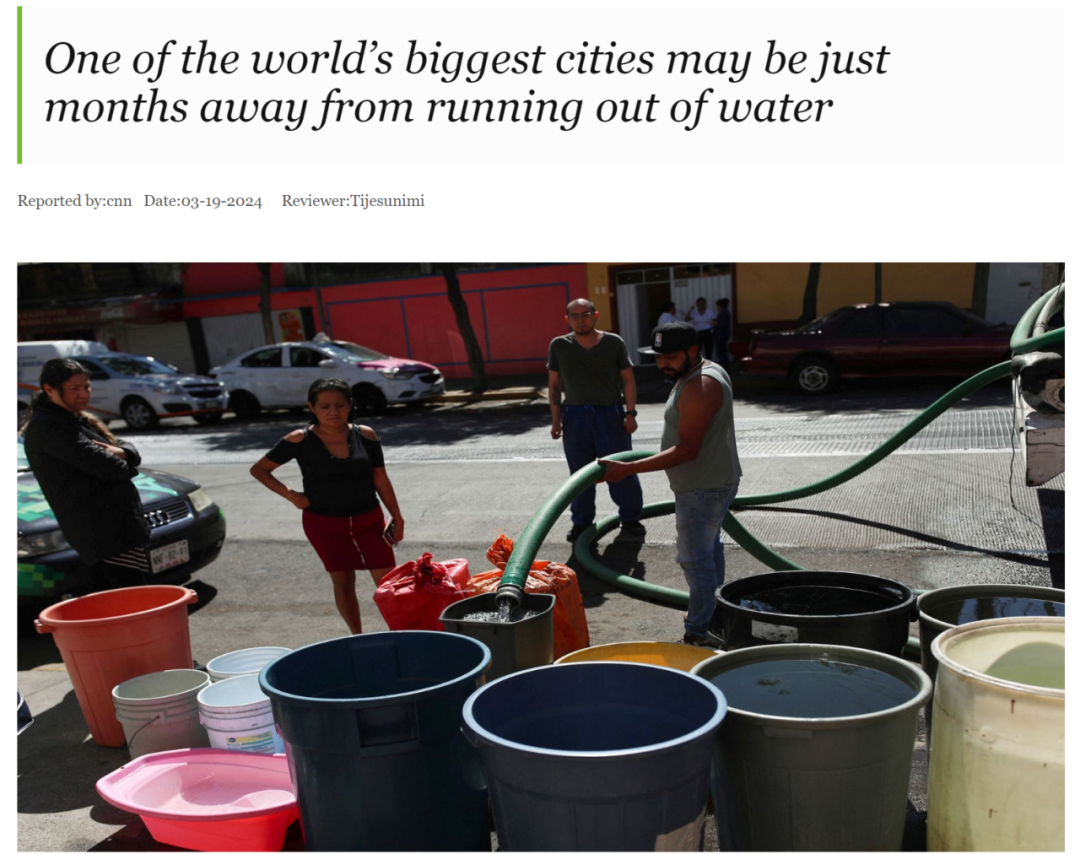
Mexico City is facing a severe water crisis exacerbated by a combination of factors, including geographical challenges, urban development issues, leaky infrastructure, and the impacts of climate change. Residents like Alejandro Gomez are experiencing prolonged water shortages, with intermittent supply that is barely enough for basic needs. The crisis is driven by years of low rainfall, longer dry periods, and high temperatures, which have strained the water system already struggling to meet increased demand. The city's reliance on a centralized water system, coupled with over-extraction from underground aquifers and inefficient water management practices, has worsened the situation. Drought conditions have led to significant reductions in water reserves, particularly in the Cutzamala water system, prompting fears of "day zero" when taps run dry for large parts of the city. While authorities downplay the severity of the crisis, experts warn of escalating tensions and unequal access to water, with wealthier neighborhoods often less affected. Addressing Mexico City's water crisis requires a multifaceted approach that integrates short-term interventions with long-term planning. Solutions proposed include better wastewater treatment, rainwater harvesting, fixing leaks, and implementing nature-based solutions. However, the implementation of these measures is slow, leaving many residents uncertain about the future. Investments in water infrastructure, sustainable resource management, and climate adaptation measures are essential to build resilience and ensure the city's water security in the face of future challenges.
Link:edition.cnn.com/2024/02/25/climate/mexico-city-water-crisis-climate-intl/index.html
链接:https://www.theglobalhorizon.press/news/details/one-of-the-world-s-biggest-cities-may-be-just-months-away-from-running-out-of-water
02Northern Alaska Is Running Out of Rock
Technology
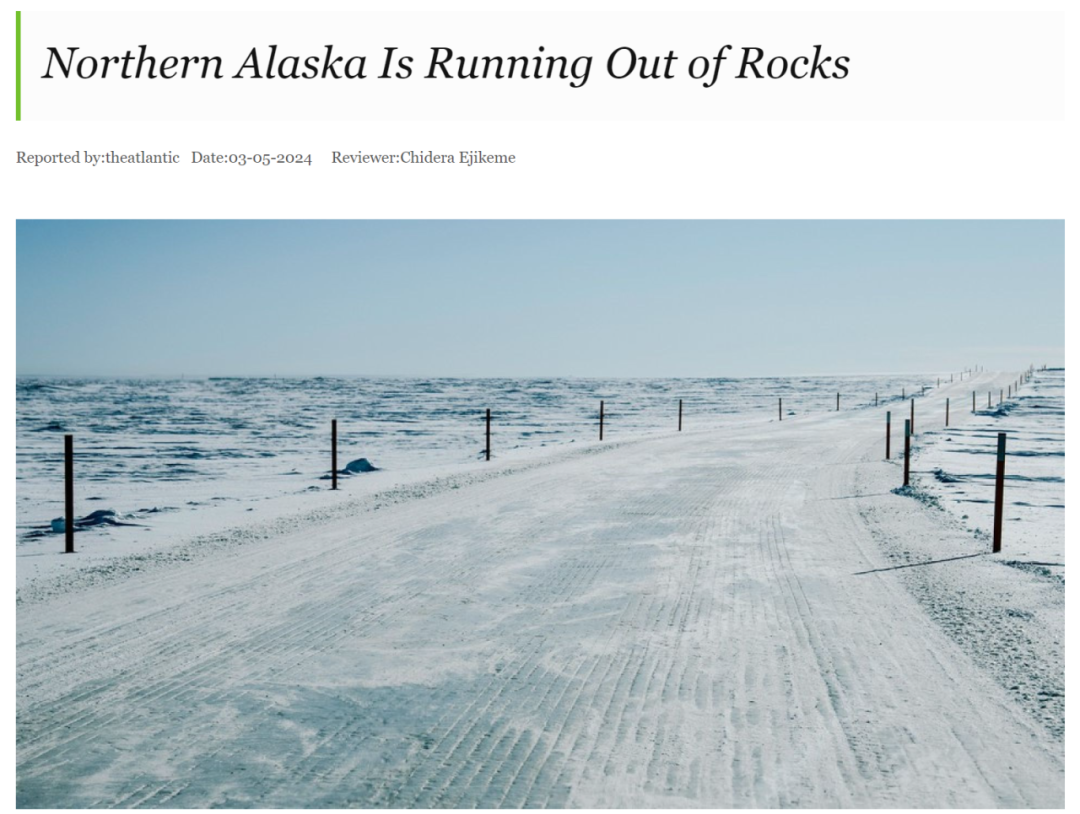
Author Emily Schwing discusses the scarcity of gravel in Alaska's North Slope, as it presents a significant challenge for development and infrastructure projects. Despite the region's abundance of natural resources, the limited availability of gravel impedes essential construction endeavors, including road building and housing development. As demand increases due to the impact of climate change such as thawing permafrost and coastal erosion, the need for this crucial material becomes even more pressing. The rising costs and logistical difficulties associated with transporting gravel exacerbate the problem, with some projects facing bids as high as $800 per cubic yard. The situation is particularly critical for remote communities like Utqiaġvik, where gravel is a fundamental component of their infrastructure. Efforts to address the gravel shortage include developing new gravel pits and exploring partnerships between the state and local governments. Additionally, gravel plays a vital role in supporting the oil and gas industry's infrastructure needs, as demonstrated by projects like ConocoPhillips' Willow Project. While some areas in Alaska have ample gravel resources, the vast expanse of the North Slope presents challenges in locating suitable gravel deposits. Overall, the dwindling supply of gravel poses significant obstacles to sustainable development and economic growth in Northern Alaska.
Link:www.theatlantic.com/science/archive/2024/02/alaska-north-slope-gravel/677340/
链接:https://www.theglobalhorizon.press/news/details/northern-alaska-is-running-out-of-rocks
03White House Aims to Reflect the Environment in Economic Data
Economics
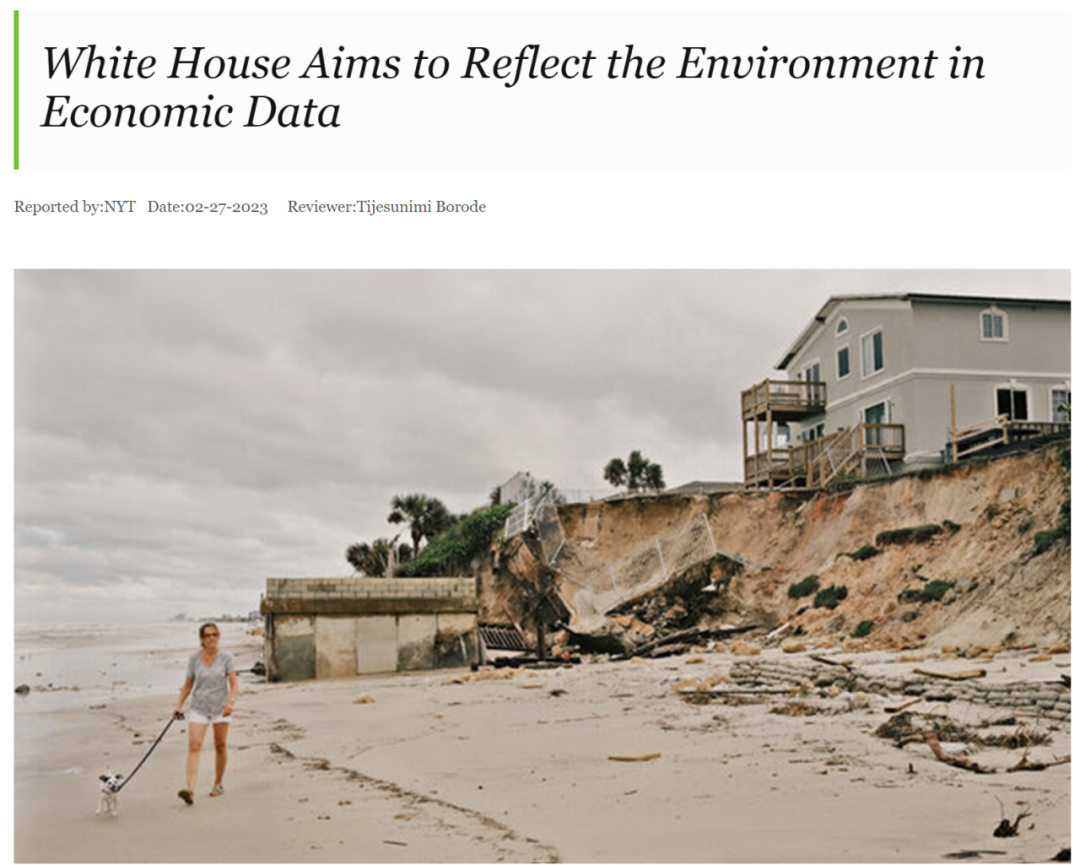
The importance of the environment is reflected in universal messaging and is explicitly measured through different metrics, but this is not true in regard to our measurements of economic activity. One way that author, Lydia DePillis, describes the potential impact of the environment on the economy is through the example of a massive storm. A huge storm leaves behind huge devastations, such as “muddied rivers” and “denuded coastlines,” but, according to the author, this type of devastation might also be a source of economic growth. Due to the realization that much economic information could be ascertained from these environmental incidents, the Biden Administration revealed a 15 year plan to measure for humanity how much benefit healthy ecosystems could provide, giving information on which sectors to invest in, and which pieces of legislation are most urgent at any given moment. Capital accounting, as this process is referred to, can be dated back to the 1910s as economists began to consider similar points of concern; it began to really take shape in the 70s to 90s as government bureau’s began to consider how environmental health could be formally incorporated into statistical models and tools. Despite this long history, there are still critics that stand against this plan on the grounds that there is no objective way to measure the impact of natural disasters.
Link:www.nytimes.com/2023/01/20/business/economy/economic-statistics-climate-nature.html
链接:https://www.theglobalhorizon.press/news/details/white-house-aims-to-reflect-the-environment-in-economic-data
HIR哈佛国际评论赛
全球顶级社科学术期刊《哈佛国际评论》旗下,国际问题研究领域学术竞赛标杆。
HIR《哈佛国际评论》,成立于 1979 年,致力于通过出色的写作和编辑选择在学术和政策之间架起桥梁。曾收录了43 位总统和总理、4 位秘书长、4 位诺贝尔经济学奖获得者和 7 位诺贝尔和平奖获得者的专题评论。

HIR的主题始终围绕着人类命运共同体的相关话题展开,并且是自命题,可选择领域也是非常广泛~
不论我们是想要检验自己写作能力水平,或者是对时政话题感兴趣,有自己的观点想法想要表达,或者是看重哈佛背书这一背景,希望通过参赛借力,冲击顶尖名校,HIR都是一个非常不错的项目~
1适合学生
全球9-12年级高中生
2参赛时间
春季赛报名截止:2024年4月25日(中国学生)
春季赛提交截止:2024年5月31日
春季赛决赛答辩:2024年6月29日
3命题领域
HIR作为一个自命题学术论文,主题不需要出现在文章题目或内容中,只要选题角度和写作内容能够反映竞赛主题理念即可。
命题方向包含但不局限于:农业、商业、网络安全、国防、教育、就业&移民、能源&环境、金融&经济、公共卫生、科技、太空、贸易、交通运输等13个领域。
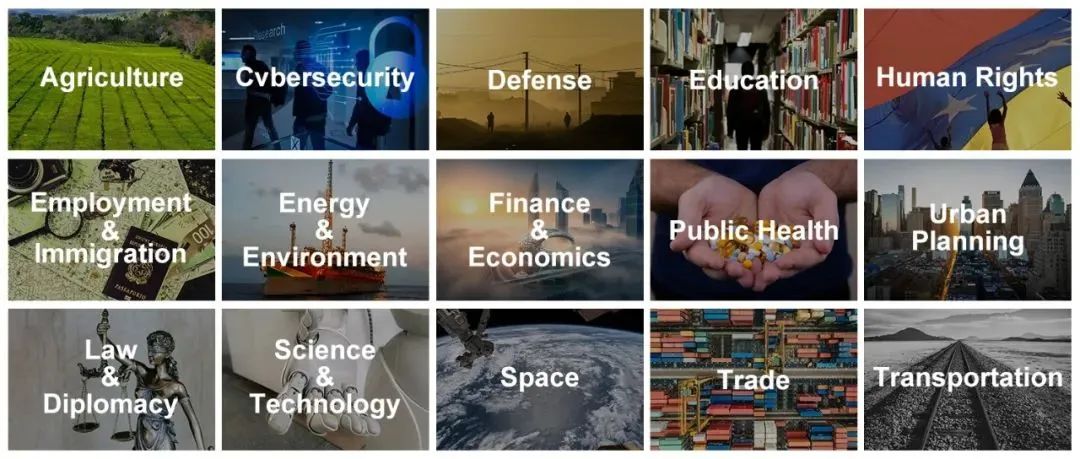
4竞赛要求
▪ 字数限制:字数800-1200(不包括图表、数据表或作者声明)
▪ 内容议题:提交的内容应针对某个不被关注的全球性主题,提出自己的观点并进行充分的分析论证。
▪ 写作风格:优秀的参赛作品需要具备全面性、批判性,遵循事实情况,进行合理地论证与分析。
1. 标注对书籍和文献的引用
2.文章必须是AP风格
▪ 答辩环节:
公布入围名单后,入围参赛者即为决赛入围者,需要在答辩日,向评委会进行 15 分钟的演讲和口头答辩。
▪ 注意事项:
● 注意赛事时间线与时差
务必注意赛方时间是基于美东时间,各个节点日期当天的11:59 P.M. (EST)。同学们做赛事规划务必考虑到时差,避免错过时机哦~
● 赛事设有答辩环节
在公布入围名单后,入围同学则自动进入“决赛圈”,需要筹备完成15分钟左右的答辩,突围冲奖!同学们需要有所准备哦!
5奖项设置
大 奖
金、银、铜奖
以及各类单项奖
Commendation Prize
Outstanding Writing Content / Style Prize
High Commendation Prize
关于HIR,想要有更针对性的赛事规划
扫描上文二维码咨询吧!










